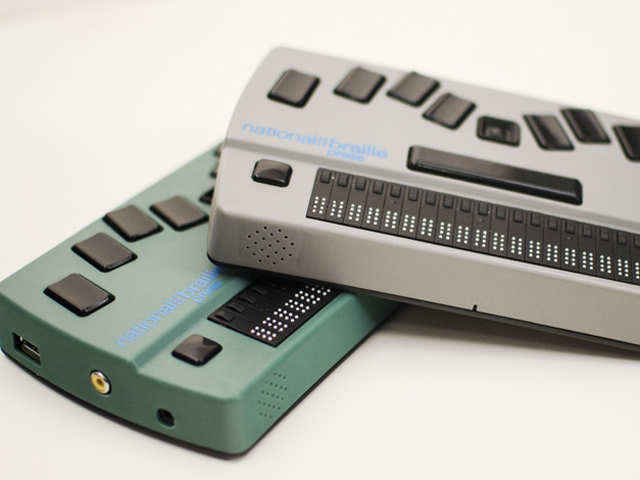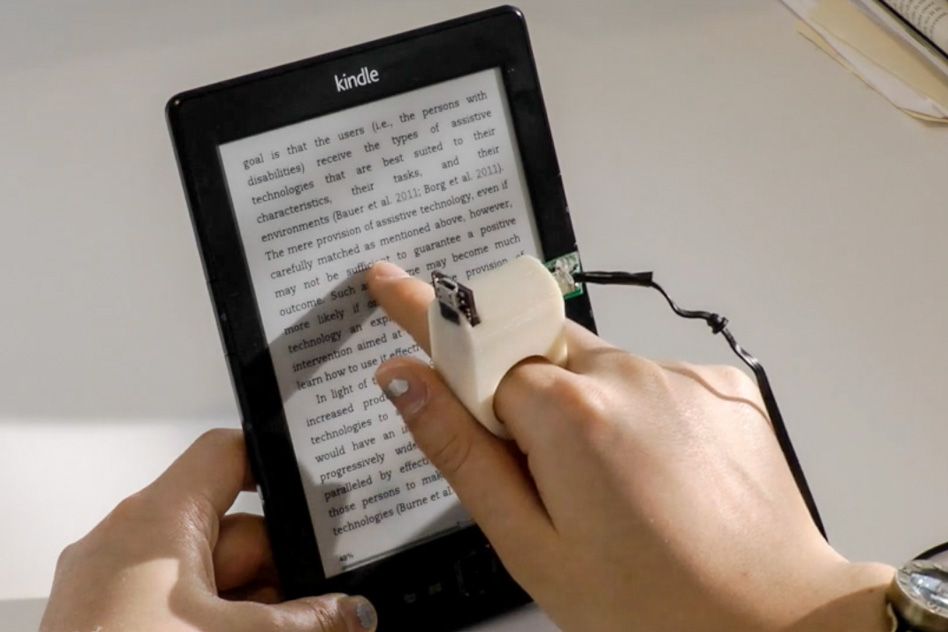Speech-to-Text Devices for Low Vision: Enhancing Accessibility
Speech-to-Text Devices for Low Vision: Enhancing Accessibility
Blog Article
Discover Ingenious Devices Made for the Visually Impaired
The growth of ingenious devices for the aesthetically impaired represents a substantial advancement in access and independence. Technologies such as smart glasses with AI capabilities and mobile applications designed to offer auditory summaries are reshaping daily experiences for users.
Smart Glasses for Navigating

Smart glasses developed for navigating are changing the way aesthetically damaged individuals connect with their environment. These innovative devices use a mix of video camera modern technology, artificial intelligence, and auditory feedback to supply real-time information concerning environments. By using barrier discovery systems, clever glasses can signal users to possible dangers, enabling safer flexibility in both unfamiliar and acquainted setups.
The integration of GPS innovation even more improves navigating capabilities, enabling individuals to obtain auditory directions as they relocate. This hands-free strategy not just cultivates independence but likewise encourages aesthetically damaged people to browse city landscapes with increased confidence. In addition, numerous wise glasses are outfitted with features that determine landmarks and street indicators, providing contextual information that enhances the customer experience.
Moreover, the advancement of these gadgets is continually progressing, with firms working to boost the accuracy of things recognition and expand the range of navigational features. As wise glasses become more affordable and obtainable, they hold the potential to substantially change life for visually damaged customers. Ultimately, these cutting-edge devices represent an essential step toward inclusivity, offering enhanced movement and a greater sense of autonomy for people navigating the world around them.
.png)
Mobile Apps for Daily Living
How can mobile applications boost the daily lives of visually damaged people? Mobile apps are changing the way aesthetically impaired individuals browse their environments, take care of daily tasks, and accessibility information. These applications offer important support through different functionalities, promoting self-reliance and boosting lifestyle.
A number of innovative mobile apps are created particularly for everyday living. For circumstances, applications like Be My Eyes attach aesthetically damaged users with sighted volunteers through video phone calls, allowing them to get real-time aid with jobs such as checking out labels or browsing unknown areas. In A Similar Way, Seeing AI, developed by Microsoft, makes use of artificial knowledge to explain surroundings, read message, and recognize things, properly changing a smartphone into an effective device for daily support.
Additionally, navigation apps customized for the visually impaired, such as Aira and BlindSquare, supply audio-based instructions and ecological details, making it possible for users to traverse their surroundings safely and confidently. Past navigation and instant support, mobile applications likewise sustain company and task administration, with functions that assist individuals establish suggestions, develop order of business, and track consultations. In recap, mobile applications work as important sources, encouraging aesthetically damaged individuals to lead even more independent and fulfilling lives.
Wearable Technologies for Aid
Empowerment with innovation is significantly evident in the world of wearable tools developed to help aesthetically damaged people. These ingenious tools integrate effortlessly into day-to-day life, boosting navigating and offering necessary feedback to customers. Clever glasses outfitted with cams can acknowledge faces and read message out loud, allowing individuals to engage more confidently in professional and social settings.
Another remarkable improvement is using haptic feedback systems in wearable gadgets. These systems make use of resonances or various other responsive signals to convey details about the user's environment, such as challenges or changes in terrain, enhancing flexibility and safety. Wearable technologies also include wristbands that link to mobile phones, alerting users to alerts via subtle vibrations, hence improving connection without dependence on visual hints.
As these technologies continue to develop, they are not only enhancing freedom for visually damaged people however additionally cultivating a better sense of incorporation in society. By bridging the gap between obstacles encountered in everyday living and the potential for freedom, wearable innovations act as critical tools in the mission for equality and empowerment for those with visual impairments.
Sound Summary Devices
Sound description devices play an important duty in boosting availability for aesthetically impaired people, giving them with the ability to involve with aesthetic media. AI-powered visual aids. These devices provide narrated summaries of crucial visual aspects in films, tv programs, and live performances, ensuring that individuals can fully understand the context and emotions communicated with visuals
Sound description can be integrated right into numerous platforms, consisting of streaming solutions, cinema screenings, and live theater. Lots of preferred streaming services now include audio description as an access function, permitting viewers to choose it conveniently. In addition to traditional media, specialized apps additionally exist, supplying audio summaries for art exhibits, museums, and various other social occasions.
The effectiveness of audio summary hinges on the skill of the storytellers, who must communicate aesthetic information succinctly without taking away from the original sound. Advancements in this field are likewise leading the means for more individualized experiences, where users can change the degree of detail and pacing according to their preferences.
Braille Innovations and Instruments
Braille additional hints technologies and gadgets have substantially transformed the way aesthetically damaged people engage with text and info. Modern developments have actually resulted in the advancement of functional devices that boost proficiency and self-reliance among users. Notably, Braille display modern technologies have advanced, permitting vibrant analysis experiences. These devices transform digital message right into Braille, enabling customers to access a substantial range of details on tablets, computers, and smartphones.
Additionally, mobile Braille notetakers integrate typical Braille input with modern-day functionalities, helping with note-taking, scheduling, and file editing and enhancing on the move. Mobility aids this for visually impaired users. These small gadgets often feature text-to-speech abilities, bridging the space in between Braille and acoustic info
Furthermore, cutting-edge Braille printers have actually emerged, allowing customers to create Braille labels, documents, and academic products successfully. This availability fosters higher participation in specialist and instructional environments, eventually promoting inclusivity.
In addition, research into wise Braille technologies remains to increase. Instruments that incorporate man-made intelligence are being checked out to offer real-time navigation help and contextual details, boosting the individual experience in diverse setups. In general, these innovations mirror a commitment to encouraging aesthetically impaired people via modern technology, guaranteeing they can quickly accessibility and engage with the globe around them.

Conclusion
The development of cutting-edge devices for the visually damaged considerably enhances independence and high quality of life. These technologies not just foster greater addition yet likewise advertise freedom in everyday tasks, eventually contributing to a much more fair and accessible culture for aesthetically impaired individuals.
As clever glasses come to be much more cost effective and obtainable, they hold the possible Click Here to significantly change day-to-day life for aesthetically impaired individuals. Mobile apps are transforming the means visually impaired individuals browse their environments, manage daily jobs, and access information. Applications like Be My Eyes connect visually impaired users with sighted volunteers by means of video phone calls, permitting them to receive real-time assistance with tasks such as checking out tags or navigating unknown spaces.In addition, navigating apps customized for the aesthetically impaired, such as Aira and BlindSquare, use audio-based instructions and ecological information, allowing customers to traverse their surroundings securely and with confidence.The improvement of cutting-edge tools for the visually damaged significantly enhances freedom and high quality of life.
Report this page